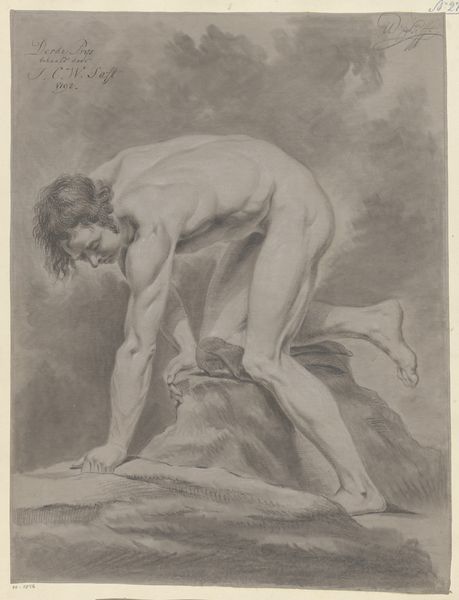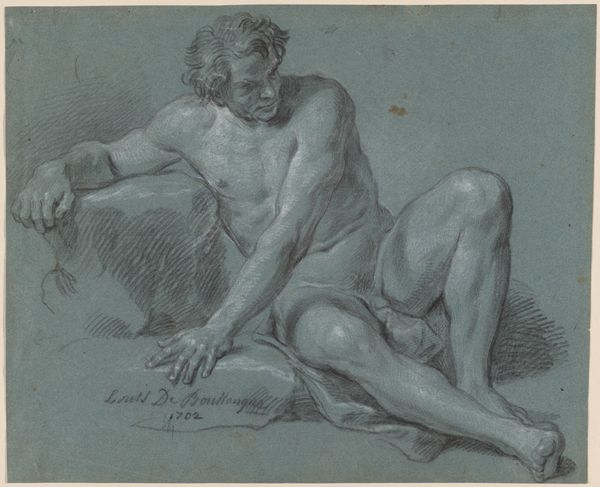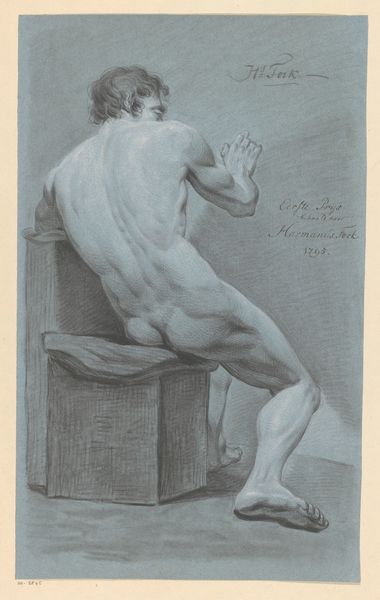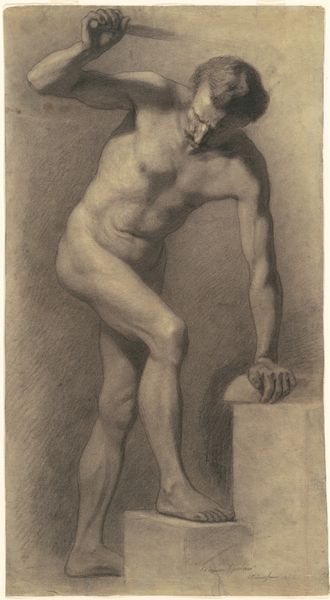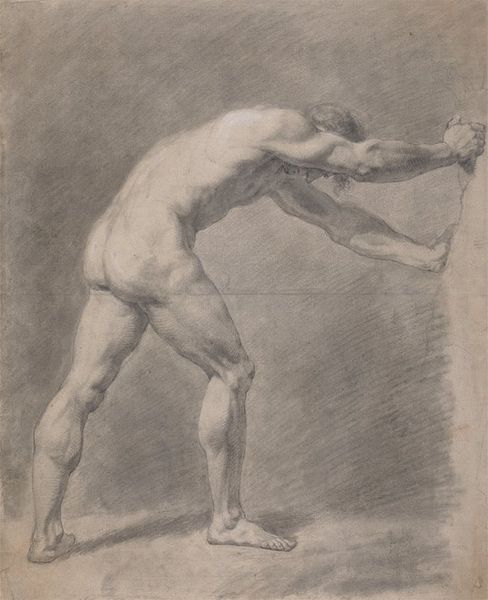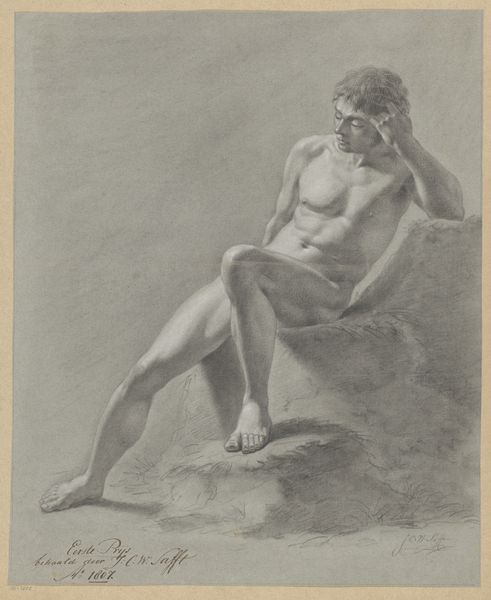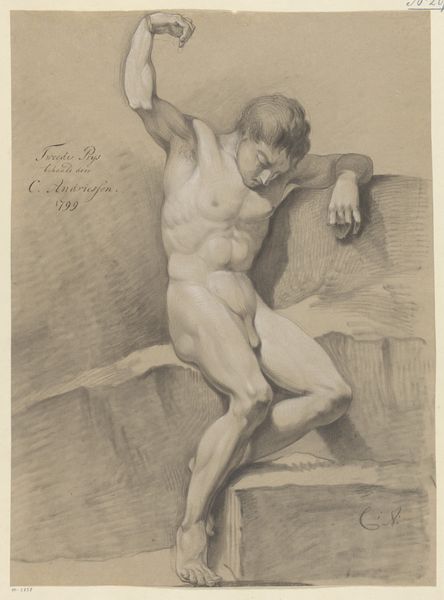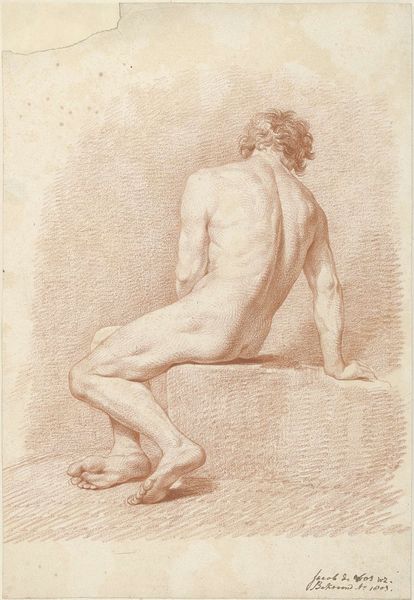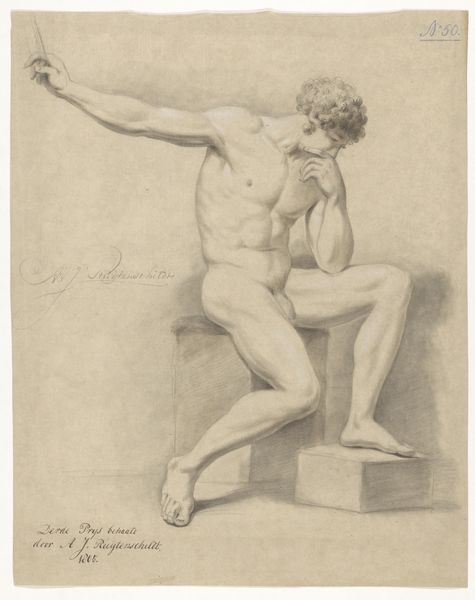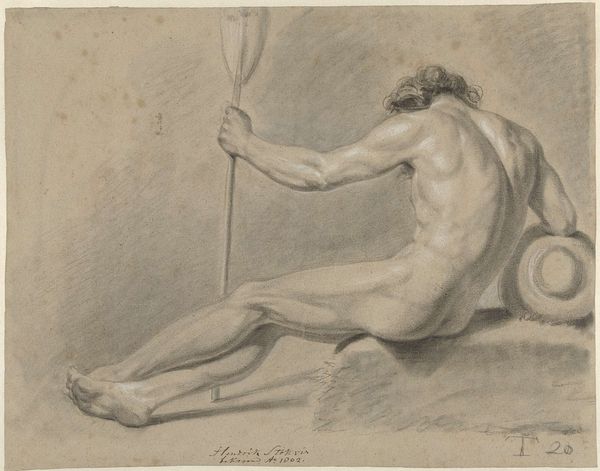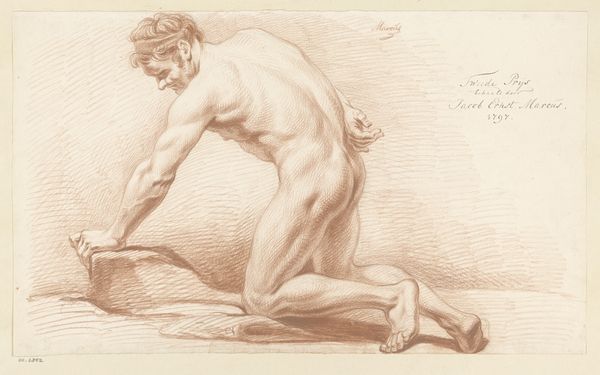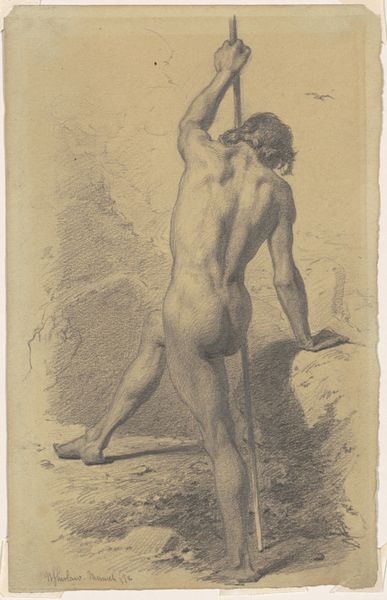
drawing, print, engraving
#
portrait
#
drawing
# print
#
figuration
#
classicism
#
portrait drawing
#
history-painting
#
academic-art
#
nude
#
engraving
Dimensions: sheet: 10 15/16 x 15 3/16 in. (27.8 x 38.5 cm) image: 10 9/16 x 15 3/16 in. (26.9 x 38.5 cm)
Copyright: Public Domain
Curator: Here we have Carle Vanloo’s “An Académie: Sitting Man,” dating to around 1742-1743, a remarkable drawing-turned-engraving now residing at The Metropolitan Museum of Art. Editor: Striking! There’s a brooding quality to the figure; he’s captured in this pose of contemplation, with an arm resting on his knee, seemingly lost in thought. I immediately think about Rodin’s “The Thinker,” but here it’s flatter, less volume and weight. Curator: Indeed, but consider the context. Vanloo, a product of the French Royal Academy, created this as an "académie"—a study of the nude male figure for aspiring history painters. These prints circulated widely, disseminating academic standards. Think of this less as a spontaneous expression, more as a standardized form designed for the consumption and education of other artists. Editor: Right. So, not an artwork in itself, but a reproducible educational commodity. How were these engravings actually made? The labor seems quite different from painting. Curator: A master engraver translated Vanloo’s chalk drawing into the lines we see here. The tools, the metal plate, the acid etching – these mechanical processes allowed for widespread distribution and democratized art education to some extent. However, this also raises questions about artistic control, and the skill-set required for art creation that is then flattened for mass appeal or study. Editor: The distribution makes the artistic choices easier to consume. This served an institutional role, legitimizing certain forms of representing the body and influencing artistic taste across the continent through easy and affordable replication. It really established classical form, line, and structure to then build ideas or break away from them. Curator: Precisely. This engraving represents not just a single artist’s skill, but an entire academic system's attempt to mold and regulate artistic practice. Editor: Seeing it this way reframes my understanding of its intent. It isn’t so much about emotional depth as it is about establishing and circulating standards of form and production of an idea. Curator: And what at first might appear as an expressive pose becomes a study in codified artistic language of body. Editor: Absolutely, thank you for the historical context that explains the piece so well, which is as important as understanding the materiality and replication method to consider the piece within art historical cannon.
Comments
No comments
Be the first to comment and join the conversation on the ultimate creative platform.
